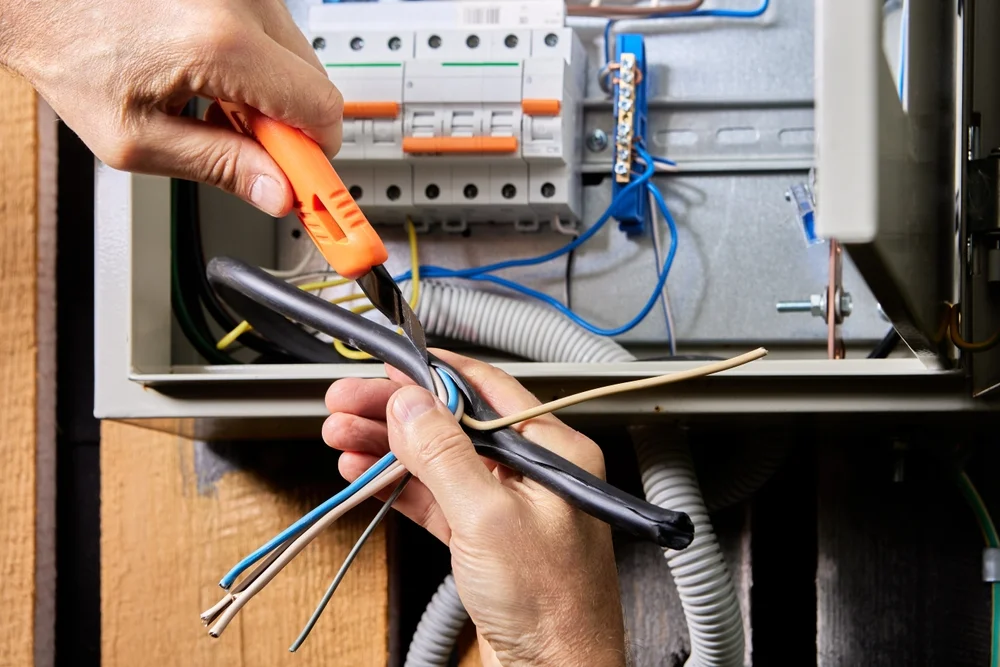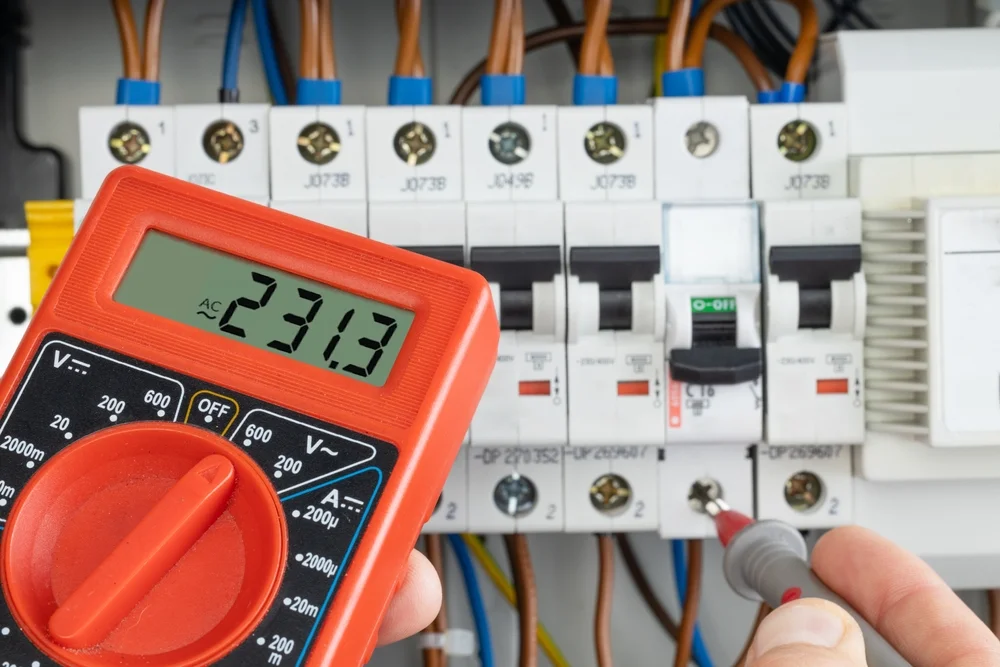
A well-functioning switchboard keeps every part of your home running safely and efficiently, and our team at Allround Electrical has seen how often homeowners underestimate its importance until something goes wrong. If you’re unsure about the condition of your system, speaking with an experienced electrician in Wollongong can help you understand whether your switchboard is still meeting modern safety standards. Acting as the control room for your entire electrical layout, the switchboard protects circuits and keeps appliances powered without strain.
When issues begin to appear, your daily routines can quickly feel disrupted, which is why recognising early warning signs makes such a difference. Many households unknowingly rely on outdated components that no longer comply with current requirements, increasing the risk of faults. Homeowners often assume that if the lights turn on and the power outlets work, everything is fine—but flickering lights, warm switches, or frequent tripping can signal deeper issues. By learning what to watch for and when to call a qualified professional, you can prevent major disruptions and keep your home running smoothly. Upgrading your switchboard not only improves safety but also prepares your home for future appliance upgrades and increased power demands.
Switchboard issues often creep up quietly, showing subtle hints long before they become noticeable problems. Many older boards are built with outdated hardware that struggles to keep up with modern power demands, especially when homes add new appliances over time. When a switchboard reaches the point where it can’t manage the load properly, it can create safety risks that shouldn’t be ignored. Homeowners benefit from understanding these signals early so they can organise a safe and timely upgrade.
Many older homes contain components that were considered acceptable when originally installed but no longer meet current regulations. These outdated parts often cannot support newer appliances that draw more power, which puts stress on the entire system. When these issues go unchecked, they create risks that affect both household safety and long-term property value.
Sudden power cuts offer a hint that your switchboard is battling to keep up with the load demands inside your home. These interruptions often appear when large appliances operate at the same time, revealing the limits of the existing setup. Consistent tripping shows that the board is struggling and needs a closer look.
Heat around switches or a faint odour from the switchboard area are serious indicators that something inside is failing. These signs show that power is not flowing cleanly through the system, which can escalate into dangerous situations if ignored. Taking action early prevents more costly repairs later.
Older switchboards come with hidden dangers that homeowners may not notice until problems escalate unexpectedly. As modern homes rely on more devices and appliances, outdated components can quickly become overwhelmed. These risks can range from minor disruptions to serious hazards that affect the safety of the household. Understanding what these risks look like makes it easier to take steps before anything major occurs.
A switchboard in poor condition significantly increases the chance of electrical fires caused by overheating or overloaded circuits. When insurers assess damage claims, they often look at whether the electrical system met current standards before the incident. If the switchboard was outdated, some insurers may reduce coverage or decline the claim altogether.
Electrical shock hazards become more prominent when circuits are not properly protected. Older boards often lack modern safety switches that instantly cut power when a fault occurs. Without these protections, even everyday appliances can create shock risks for individuals in the home.
Modern homes house more appliances than ever, often exceeding what older switchboards were designed to handle. When too many devices run at once, circuits become overwhelmed and start to show signs of stress. Over time, this strain creates risks that affect both safety and convenience.
Upgrading a switchboard involves more than simply replacing old parts with new components. The process requires a detailed assessment of your electrical layout to ensure every circuit can operate safely. Professionals work through each part of the system to confirm that everything complies with modern standards. Knowing what to expect helps homeowners feel confident and prepared throughout the upgrade.
Level 2 electricians are licensed to work directly with live supply lines and handle more complex electrical tasks than standard technicians. Their expertise ensures that the upgrade is carried out with the highest safety standards. They assess supply requirements and carry out installations with precision to support long-term reliability.
Before any upgrade begins, the home must be evaluated to identify existing issues or limitations. This preparation ensures that the installation runs smoothly from start to finish. A thorough check also helps determine the best configuration for the new system.
Once the installation is complete, professionals carry out several tests to confirm everything operates safely. These tests verify that the new components can handle everyday demands without strain. Certification provides proof that the electrical system now meets current standards.

Many homeowners are surprised when they receive a defect notice, especially if they believed their electrical system was functioning normally. These notices highlight issues that could impact safety or regulatory compliance. Understanding what they mean helps homeowners respond quickly and avoid penalties or electrical interruptions. Addressing defects promptly also protects property value over the long term.
Defect notices outline problems that require urgent attention from qualified professionals. These issues can stem from outdated components, non-compliant installations or visible hazards. Knowing how to interpret these notices helps homeowners take action without delay.
Notices are typically issued when certain conditions are found during inspections or supply reconnections. These issues highlight areas where the electrical layout no longer complies with current standards. Understanding these triggers helps homeowners stay prepared.
Compliance reports serve as proof that electrical systems meet current standards. They offer homeowners confidence that the system is safe and reliable. These reports are also useful when selling or renovating a property.
Homeowners often have questions about when an upgrade is needed and what the process involves. These questions usually arise from concerns about safety and overall convenience. Clear answers help make the decision easier and reduce uncertainty about the work involved. Having the right information empowers homeowners to make informed choices.
Regular checks help ensure that your electrical system remains safe as your home grows and changes. Over time, new appliances and wear on components can affect how well the board performs. Scheduling inspections helps identify problems early.
Many homeowners worry that upgrades will heavily disrupt their routines. In most cases, the process is planned to minimise inconvenience. Professionals work efficiently to keep interruptions short.
Understanding your home’s electrical behaviour helps determine when an upgrade is necessary. Some signs are subtle, while others are more noticeable. Paying attention to these hints can help avoid safety issues.
A switchboard upgrade brings peace of mind while preparing your property for the demands of modern living. Allround Electrical often meets homeowners who didn’t realise how much strain their system was under until they experienced repeated outages or growing safety concerns. By recognising the early signs, you can take action before these issues escalate and protect both your home and your family from unnecessary risks.
A modern switchboard supports better energy flow and a more reliable experience during everyday use. When installed by qualified professionals, the upgrade enhances the overall performance of your electrical layout and ensures your home remains ready for new appliances and future improvements. An upgrade is not just a safety measure; it is an investment that strengthens the heart of your home and keeps everything running without worry.



